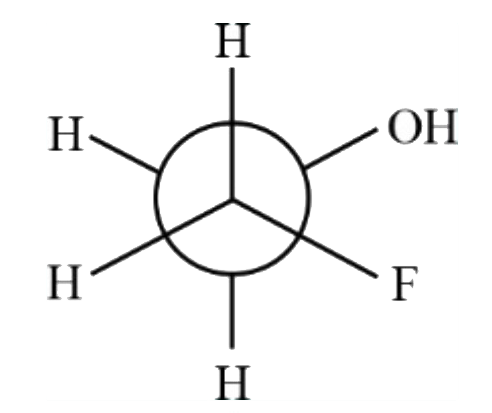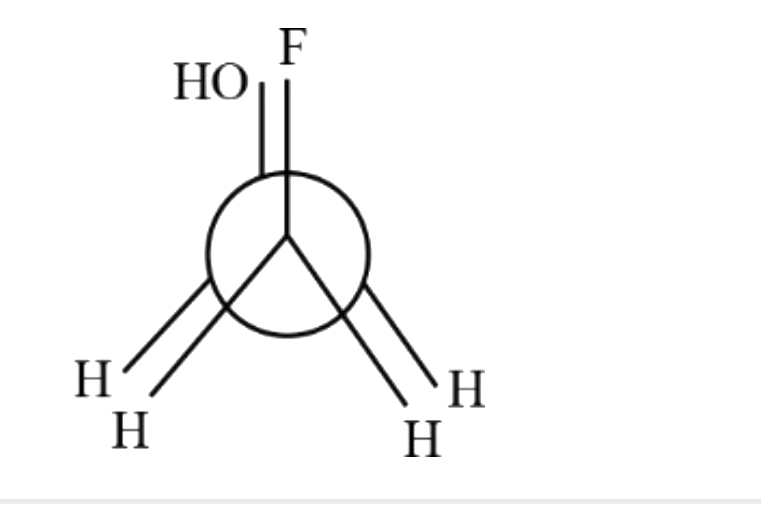Find out the most stable oxidised species.
Cr3+
MnO−4
Cr2O2−7
Mn2+
The correct Answer is:A
To find the most stable oxidized species, we need to analyze the standard electrode potentials (E° values) for the oxidation reactions of different species. Here’s a step-by-step solution:
Step 1: Identify the species and their oxidation states
We are considering the following species:
- Chromium (Cr) to Chromium(III) ion (Cr³⁺)
- Chromium(III) ion (Cr³⁺) to Dichromate ion (Cr₂O₇²⁻)
- Manganese(II) ion (Mn²⁺) to Permanganate ion (MnO₄⁻)
Step 2: Write down the standard electrode potentials (E° values)
From the information provided:
- For the reaction: Cr → Cr³⁺, E° = +0.74 V
- For the reaction: Cr³⁺ → Cr₂O₇²⁻, E° = -1.33 V
- For the reaction: Mn²⁺ → MnO₄⁻, E° = -1.51 V
Step 3: Analyze the stability of oxidized species
The stability of an oxidized species is generally indicated by its standard electrode potential. A higher (more positive) E° value indicates a more stable oxidized form.
1. Cr to Cr³⁺: The E° value is +0.74 V, indicating that Cr³⁺ is a stable oxidized species.
2. Cr³⁺ to Cr₂O₇²⁻: The E° value is -1.33 V, indicating that Cr₂O₇²⁻ is less stable compared to Cr³⁺.
3. Mn²⁺ to MnO₄⁻: The E° value is -1.51 V, indicating that MnO₄⁻ is also less stable compared to Mn²⁺.
Step 4: Conclusion
Based on the E° values, the most stable oxidized species among the ones considered is Cr³⁺ because it has the highest positive electrode potential (+0.74 V) compared to the other oxidized forms (Cr₂O₇²⁻ and MnO₄⁻).
Final Answer
The most stable oxidized species is Cr³⁺.
---
We are considering the following species:
- Chromium (Cr) to Chromium(III) ion (Cr³⁺)
- Chromium(III) ion (Cr³⁺) to Dichromate ion (Cr₂O₇²⁻)
- Manganese(II) ion (Mn²⁺) to Permanganate ion (MnO₄⁻)
From the information provided:
- For the reaction: Cr → Cr³⁺, E° = +0.74 V
- For the reaction: Cr³⁺ → Cr₂O₇²⁻, E° = -1.33 V
- For the reaction: Mn²⁺ → MnO₄⁻, E° = -1.51 V
The stability of an oxidized species is generally indicated by its standard electrode potential. A higher (more positive) E° value indicates a more stable oxidized form.
2. Cr³⁺ to Cr₂O₇²⁻: The E° value is -1.33 V, indicating that Cr₂O₇²⁻ is less stable compared to Cr³⁺.
3. Mn²⁺ to MnO₄⁻: The E° value is -1.51 V, indicating that MnO₄⁻ is also less stable compared to Mn²⁺.
Based on the E° values, the most stable oxidized species among the ones considered is Cr³⁺ because it has the highest positive electrode potential (+0.74 V) compared to the other oxidized forms (Cr₂O₇²⁻ and MnO₄⁻).
The most stable oxidized species is Cr³⁺.
Topper's Solved these Questions
- ELECTROCHEMISTRYBOOK - PRADEEPCHAPTER - ELECTROCHEMISTRYEXERCISE - NCERT EXEMPLAR PROBLEMS WITH ANSWERS, HINTS AND SOLUTIONS (MULTIPLE QUESTIONS-II)
10 Videos
- ELECTROCHEMISTRYBOOK - PRADEEPCHAPTER - ELECTROCHEMISTRYEXERCISE - NCERT EXEMPLAR PROBLEMS WITH ANSWERS, HINTS AND SOLUTIONS (MATCHING TYPE QUESTIONS)
3 Videos
- ELECTROCHEMISTRYBOOK - PRADEEPCHAPTER - ELECTROCHEMISTRYEXERCISE - NCERT EXERCISES
16 Videos
- D- AND F-BLOCK ELEMENTSBOOK - PRADEEPCHAPTER - D- AND F-BLOCK ELEMENTSEXERCISE - IMPORTANT QUESTIONS
30 Videos
- GENERAL PRINCIPLES AND PROCESSES OF ISOLATION OF ELEMENTS BOOK - PRADEEPCHAPTER - GENERAL PRINCIPLES AND PROCESSES OF ISOLATION OF ELEMENTS EXERCISE - Curiosity Questions
2 Videos
Similar Questions
Knowledge Check
Find the most stable form
A B
B C
C DBoth B & C
DBoth B & CUse the data given in Q.8 and find out the most stable ion in its reduced form.
ACl−BCr3+CCrDMn2+The most stable hydride is
ANH3BPH3CAsH3DSbH3
The most stable ion is :
View SolutionAmong the following sets, the most stable ionic species are
View SolutionThe stabilization of coordination compound due to chelation is called the chelate effect. Which of the following is the most stable complex species?
View SolutionThe stabilization of coordination compound due to chelation is called the chelate effect. Which of the following is the most stable complex species?
View SolutionThe stabilisation of coordination compounds due to chelation is called the chelate effect. Which of the following is the most stable complex species ?
View Solution
